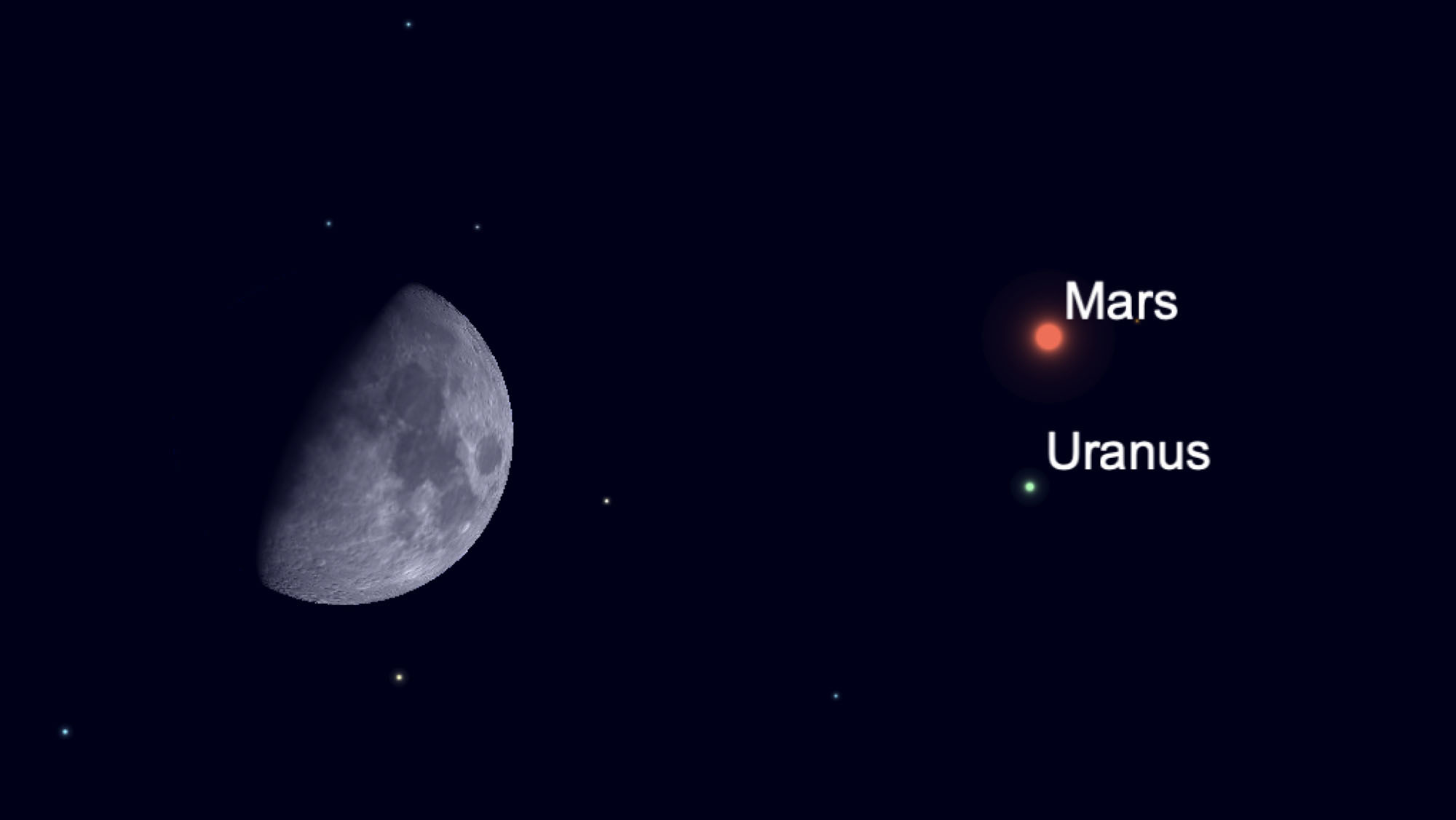You can see Uranus, Mars and the moon get close in a rare night sky sight tonight
You'll need binoculars to spot the skywatching treat!

Look up tonight (Jan. 21) to see Uranus and Mars nestled together in the night sky — just don't forget your binoculars.
Yesterday (Jan. 20) on Inauguration Day in the U.S., the two planets were in conjunction, meaning they appeared very close together in the sky. Tonight, the planets will share the same "right ascension," with Mars passing just 1.75 degrees to the north of Uranus, according to Earthsky.org. (Your fist held at arm's length covers about 10 degrees of sky.) The moon will also be shining nearby, making it a good landmark to start from when looking for the planets.
Uranus, the seventh planet in our solar system, which orbits 1.8 billion miles (2.9 billion kilometers) from the sun, will be at a magnitude 5.8 in the sky. Meanwhile, Mars, the fourth planet from the sun, which orbits at an average distance of "just" 143.6 million miles (231.1 million km), will be visible at magnitude 0.2.
The brightest planets in January's night sky: How to see them (and when)
The lower the magnitude number a cosmic object has, the brighter it is (there are even seriously bright objects with negative magnitudes), so Mars will be significantly brighter in the sky than Uranus. But, while Uranus will be tough to spot, both will still be visible with the help of binoculars, though the planets will be too far separated to fit within a telescope's field of view, according to in-the-sky.org.
To try and find Uranus, first "find the crescent moon and the Red Planet in the couple of hours after it gets dark. Scan your way over from Mars toward the moon, and you should be able to find the faint, bluish disk of Uranus," NASA's Jet Propulsion Laboratory said in its monthly "What's Up" skywatching series.
Now, while Uranus and Mars will be putting on this show in the night sky, they won't be the only planets hanging out tonight. Both Jupiter and Saturn are still officially in the evening sky, though the light from the setting sun makes it so they are not visible, according to Earthsky.org.
Get the Space.com Newsletter
Breaking space news, the latest updates on rocket launches, skywatching events and more!
Email Chelsea Gohd at cgohd@space.com or follow her on Twitter @chelsea_gohd. Follow us on Twitter @Spacedotcom and on Facebook.
Join our Space Forums to keep talking space on the latest missions, night sky and more! And if you have a news tip, correction or comment, let us know at: community@space.com.

Chelsea “Foxanne” Gohd joined Space.com in 2018 and is now a Senior Writer, writing about everything from climate change to planetary science and human spaceflight in both articles and on-camera in videos. With a degree in Public Health and biological sciences, Chelsea has written and worked for institutions including the American Museum of Natural History, Scientific American, Discover Magazine Blog, Astronomy Magazine and Live Science. When not writing, editing or filming something space-y, Chelsea "Foxanne" Gohd is writing music and performing as Foxanne, even launching a song to space in 2021 with Inspiration4. You can follow her on Twitter @chelsea_gohd and @foxannemusic.









